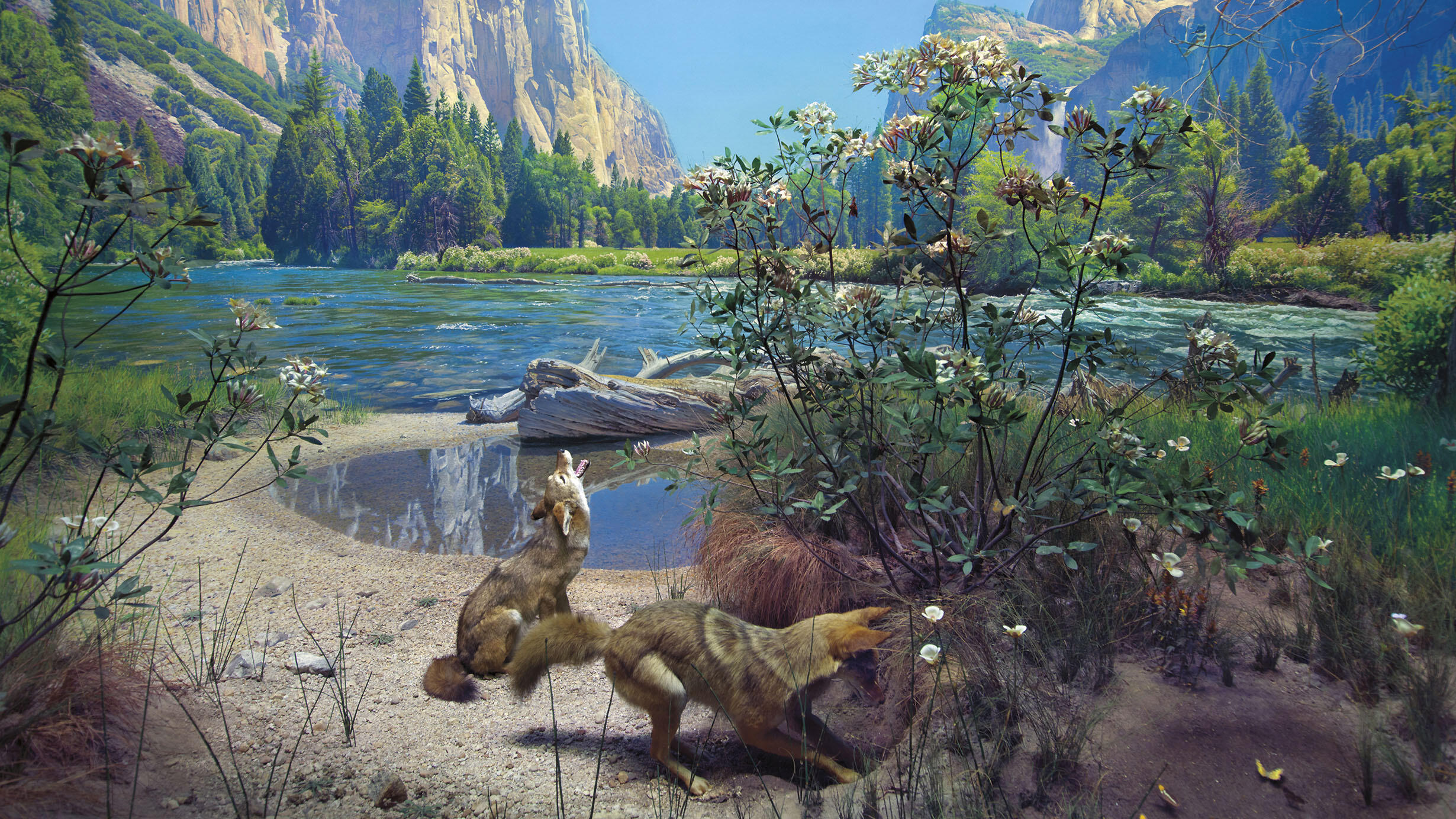Coyote
Part of Hall of North American Mammals.
 Diorama in the Bernard Family Hall of North American Mammals depicts two coyotes in Yosemite National Park, California.
Diorama in the Bernard Family Hall of North American Mammals depicts two coyotes in Yosemite National Park, California.R. Mickens/© AMNH
June, Yosemite Valley, California
A coyote sends a yippy howl through the granite-flanked gap of Yosemite Valley. The long-distance call, rare in mammals, wards off packs nearby. The second coyote may chime in to broadcast the number in its pack, but for now it is preoccupied with digging for a gopher or another burrower.
Coyotes evolved as hunters of small prey on the Great Plains. Since the 1950s, coyotes have expanded to the north and east where wolves once lived. In areas where wolves and cougars are still absent, coyotes act as top predators—although being smaller, they may scavenge as much big game as they catch.
Yosemite Valley in Bloom
Valley View
Yosemite National Park, California
“None can escape its charms,” said wilderness crusader John Muir, of Yosemite. All the more so in springtime, when the Sierra Nevada range is exuberant with new life. As warmer weather melts the winter snowpack, the park’s waterways peak in volume. Meadows like this one absorb the water like sponges and become lush, supporting a remarkable diversity of species. Glacier-sculpted granite bedrock not only overlooks the landscape but also underlies it at shallow depths, helping Yosemite’s wet meadows retain water—and their wildlife—well into summer.
© AMNH Library
On a Changing Continent, Coyotes Prevail
Highly adaptive and able to share terrain with humans, the coyote expanded eastward as the American continent developed.
Coyote Call and Song
Hear a recording of howling within a coyote pack.